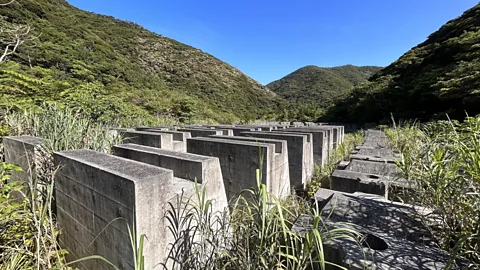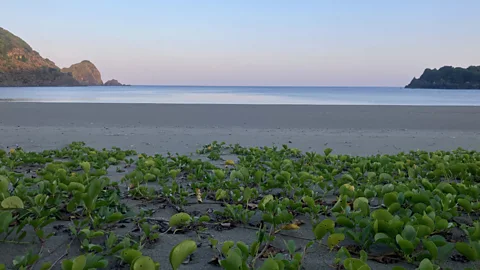The project saw final approval by the Kagoshima Prefecture in January 2018, but in the meantime other local residents have come together to oppose the seawall, arguing it is in danger of disrupting the Katoku River, affecting the entire rare beach ecosystem. In September 2020, a petition with more than 30,000 signatures was submitted to the governor of Kagoshima, mayor of Setouchi town and Setouchi town council, urging for construction to be reconsidered. Scientists, environmental groups and residents say they have also submitted appeals to the Kagoshima Prefecture to reconsider the construction and hold open discussions with residents. Several told the BBC they did not receive a response. The BBC contacted Kagoshima Prefecture but received no comment.
Meanwhile, in 2021, the International Union for Conservation of Nature (IUCN), the official advisor on nature under the World Heritage Convention, designated the local Katoku River and neighbouring beach areas as a buffer zone. The designation means these areas are legally protected by the Japanese government.
 Kaori Kohyama
Kaori KohyamaThe IUCN noted the seawall construction would continue, but its report included a statement from the Japanese government saying the seawall would be “far from the mouth of the Katoku River” to avoid any negative impacts on the river. Environmental monitoring would be continued after construction to watch for any unexpected impacts too, it said.
Construction started the following year, in February 2022, but locals say it appears to have been halted several times since, as well as disrupted by sit-ins by local protestors. It restarted again in July 2024 and is now in the final stages of building a road to allow work to start on the seawall. Even as construction is beginning, however, a legal case in opposition to the seawall is ongoing at the Japanese Supreme Court.
Filed in 2018, the plaintiffs consist of locals and the Japan Environmental Lawyers Federation (Jelf), who argue that Kagoshima Prefecture is misusing public funds by pushing ahead with the project. They contend the wall is unnecessary and will not help with any sand dune erosion if indeed there is any. Kagoshima Prefecture contest the allegations, arguing that the construction is necessary to protect the village from coastal erosion caused due to natural disasters such as typhoons, and asserting that the project follows proper procedures and legal standards. Kagoshima Prefecture did not respond to the BBC’s request for comment on the case.
Shifting sands
Separately, some are concerned that the seawall is being built in a more problematic location than environmental overviews of the project first indicated – closer to the river mouth, risking its ecosystem and biodiversity.
After a request from the Jelf lawyers and NGO Save Katoku, Coastal Engineering Laboratory, an independent research team based in Tokyo, investigated the concerns around the impact of the seawall on the local ecosystem. In a September 2024 letter sent to Save Katoku and its defending lawyers and seen by the BBC, it concluded that the seawall is indeed set to be constructed “within” the river channel of the Katoku River. Coastal Engineering Laboratory told the BBC that it has not received any financial assistance from any of the parties involved in the legal case. Kagoshima Prefecture did not respond to the BBC’s request for comment on the seawall location.
“At some points of the year, the river’s mouth – the entire beach – shifts seasonally, which means that the river can flow across the sand and reach right where the seawall is planned, for about six months,” says Jean-Marc Takaki, head of the local non-profit Save Katoku says. “This contradicts the government’s own promise of building the wall far away… among many things it disrupts the natural meandering of the river and the whole sand process of the beach essential to maintaining the ecosystem.” The BBC contacted Japan’s Ministry of Land, Infrastructure and Transport but did not receive a comment by the time of publication.
Takaki is calling for an Unesco Reactive Monitoring mission to investigate these concerns and provide recommendations to ensure the protection and conservation of the river.
 katoku.org
katoku.org